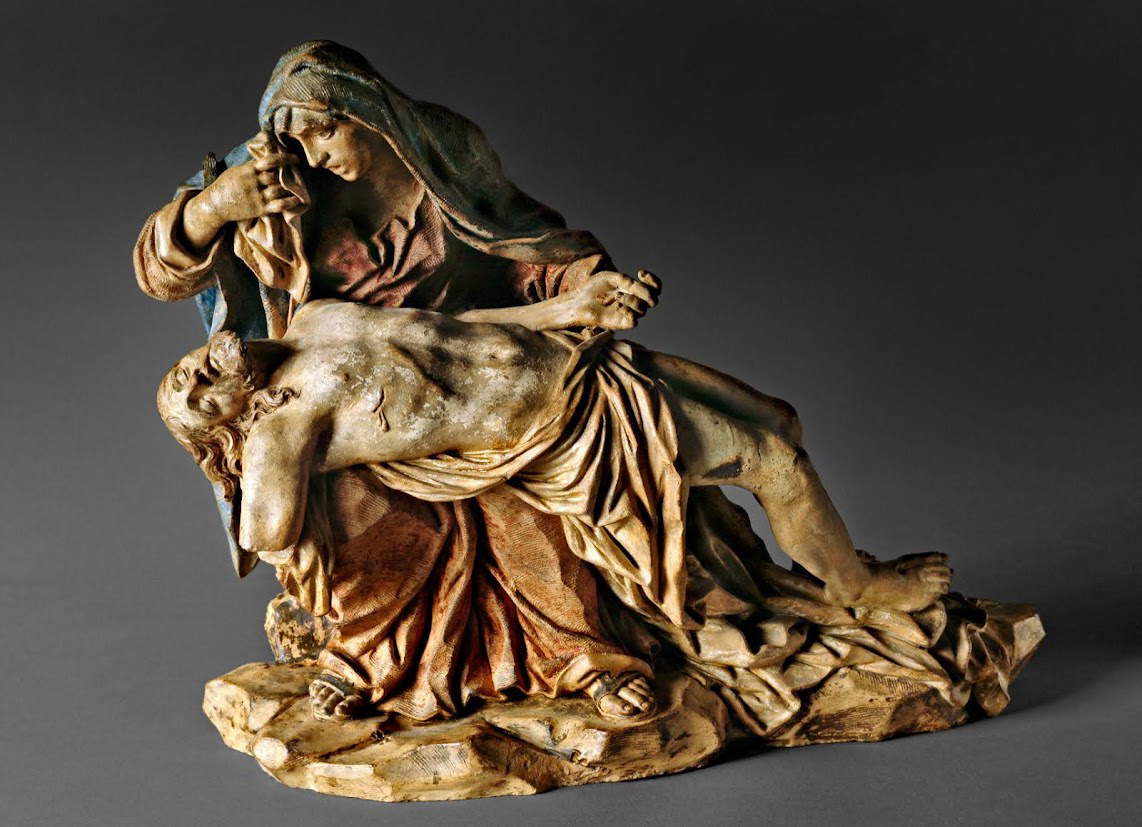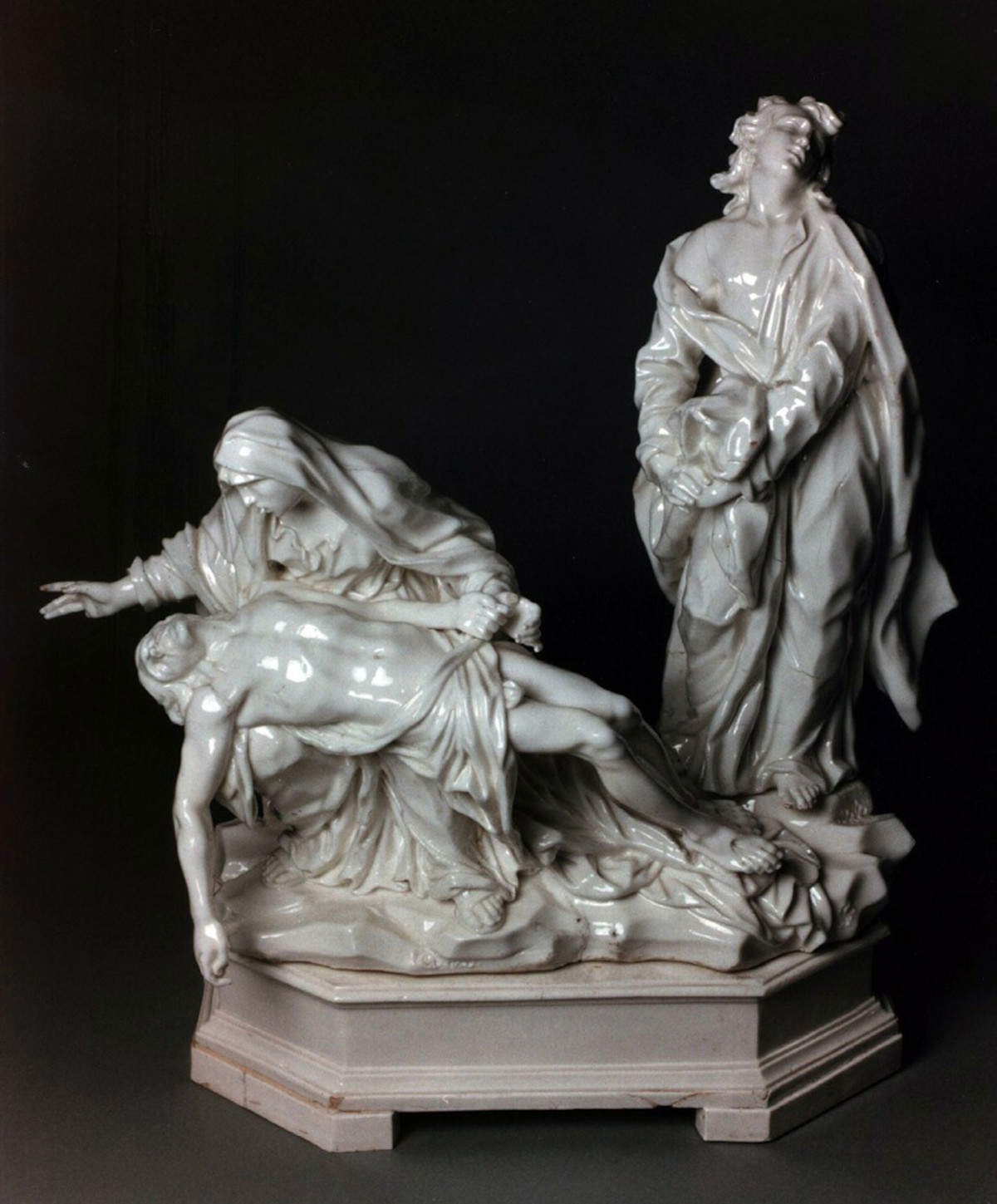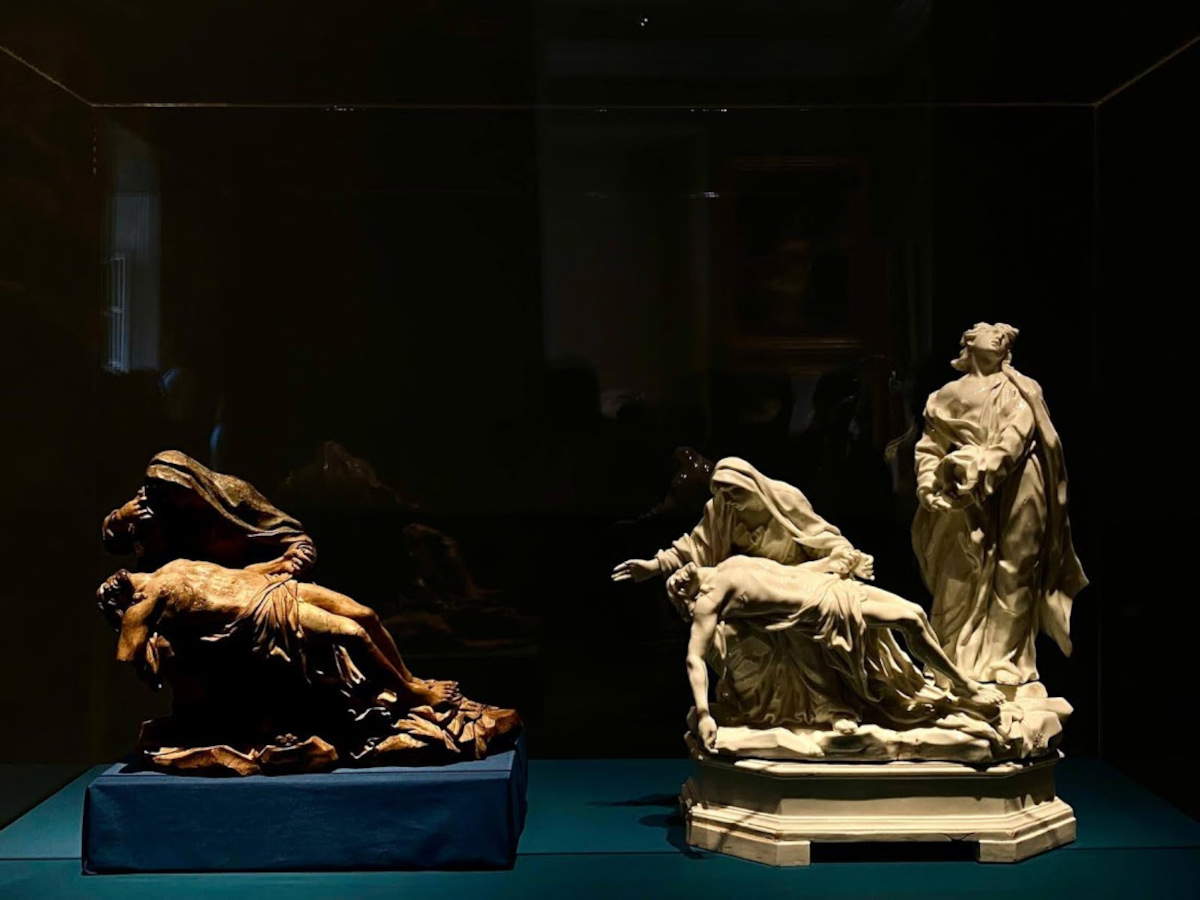A precious piece of Capodimonte’s historical identity is returning to enrich the narrative of the Royal Porcelain Factory, founded by Charles of Bourbon in 1743. It is the Pieta by Giuseppe Gricci, the official modeler of the sovereign: a terracotta sculpture, considered a very rare piece, recognized by scholars some 20 years ago on the international art market.
The work is the focus of the exhibition The Pieta of Gricci, the King’s Modeler. New Capodimonte Acquisition. Between Terracotta and Porcelain, which can be visited until Oct. 28, 2025. For the occasion, the new acquisition is placed in dialogue with another Pieta by the same author-the porcelain one with St. John the Evangelist, preserved at the Duca di Martina Museum. Both sculptures are inspired by the pyramidal composition of Michelangelo’s famous Pieta: the lifeless body of Christ lying on the legs of the Virgin, with the figures joined by a wide drapery.
A direct comparison between the two sculptural groups-one in terracotta, the other in porcelain-allows us to grasp the evolution of Gricci’s style on the theme: the porcelain version appears more theatrical and detached, where grief is ennobled and sublimated; in contrast, the terracotta one restores a more personal and realistic pathos, in which the gesture of the Madonna wiping away her tears conveys a deeply maternal grief.
The dialogue between the two works is housed in room 20 on the second floor of the Capodimonte Museum, the same room where Annibale Carracci’s famous Pietà is located. This painting, probably executed for the private devotion of Cardinal Odoardo and found in the 18th century in the Royal Palace of Naples, is imbued with an intense, collected suffering. The monumentality of the characters and the plastic rendering of details such as the sharp folds of the Virgin’s robe made this work a point of reference for generations of artists - painters, sculptors, engravers and model makers. Gricci is also clearly influenced by it, taking up various elements in his two plastic groups, such as the abandoned limbs of Christ, whose body is naturally prolonged in the shroud resting on the rock.
The official presentation was attended by Luigi Gallo, acting director of the Vomero National Museums, and Riccardo Naldi, professor of History of Modern Art at the University of Naples L’Orientale, the first to identify the terracotta group as a work by Gricci in 2007.


Giuseppe Gricci, a refined Florentine sculptor and model maker, worked from the earliest years of the Royal Porcelain Factory at Capodimonte, specializing in sacred subjects destined for the Bourbon court. Between 1744 and 1745, he devoted himself several times to the depiction of the Pieta. A document published by Minieri Riccio in 1888 testifies that in April 1744 Gricci “made a Pieta in porcelain and a maensola with its form in plaster.” Although the terracotta acquired today presents a variation in the movement of the Virgin’s right arm, which prevents it from being considered the direct model of the porcelain work housed in the Duca di Martina Museum, it nevertheless allows us to reconstruct the artist’s creative process and elaboration of the subject. The traces of color visible on the surface suggest a possible use as a test base for pictorial decorations, similar to those observable in a rare polychrome porcelain specimen preserved at the Museo Municipal in Madrid.
“It was exciting to bring this work back to Naples, where it was made, and admire it up close,” said Eike Schmidt, director of the Museo e Real Bosco di Capodimonte. “In the city’s public collections there is no terracotta sketch preserved that can be ascribed, like this one, to the hand of the celebrated chief model-maker of the Real Fabbrica. The clay model shaped by Gricci is, in fact, the stage of the work in which it is most immediately possible to grasp the mark and figurative culture of this great Florentine artist, whom Charles of Bourbon wanted with him, first in Naples and then in Madrid. We wanted to share this acquisition immediately with the many visitors who flock to the Museum and Real Bosco during the summer period. With a small display that is meant to be a valuable anticipation of the new porcelain section, expected in a few months.”

 |
| Gricci's Pieta, a precious piece of the history of the Royal Porcelain Factory, returns to Capodimonte |
Warning: the translation into English of the original Italian article was created using automatic tools. We undertake to review all articles, but we do not guarantee the total absence of inaccuracies in the translation due to the program. You can find the original by clicking on the ITA button. If you find any mistake,please contact us.